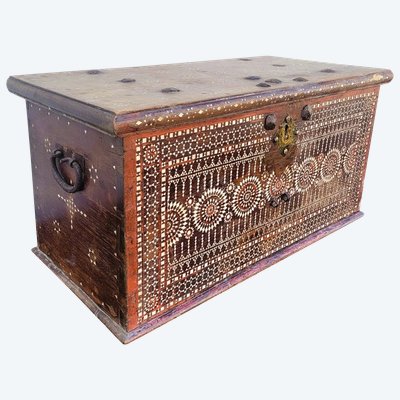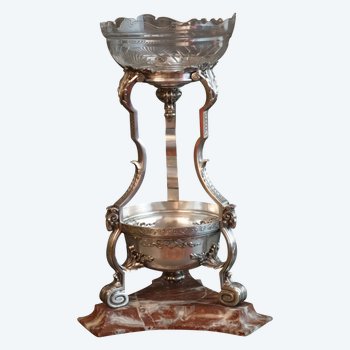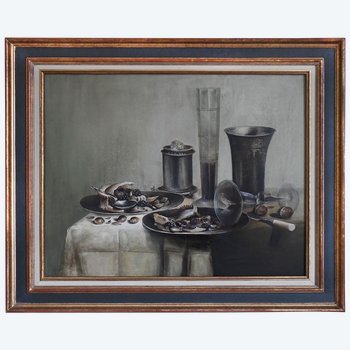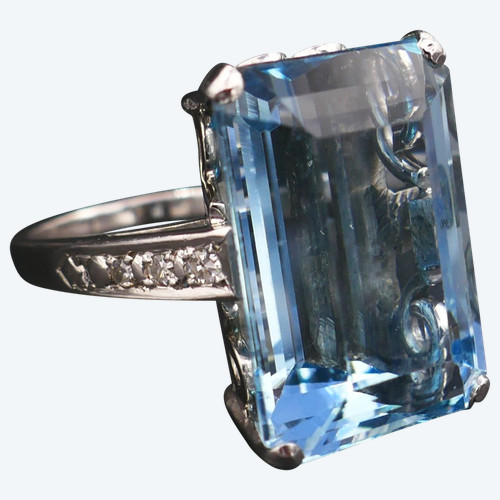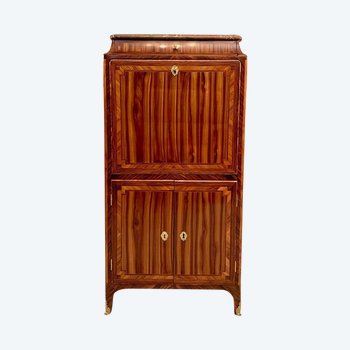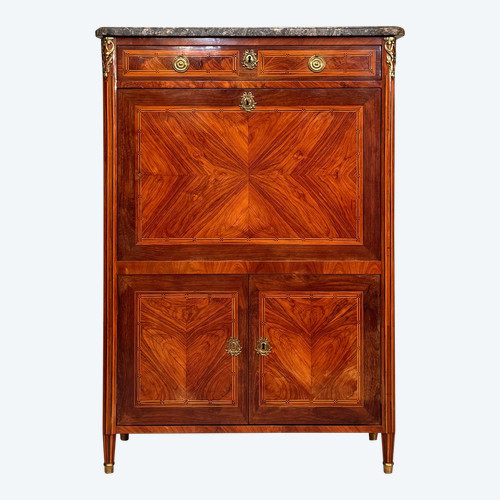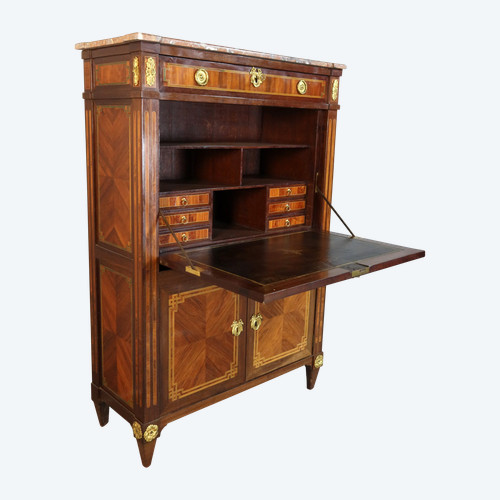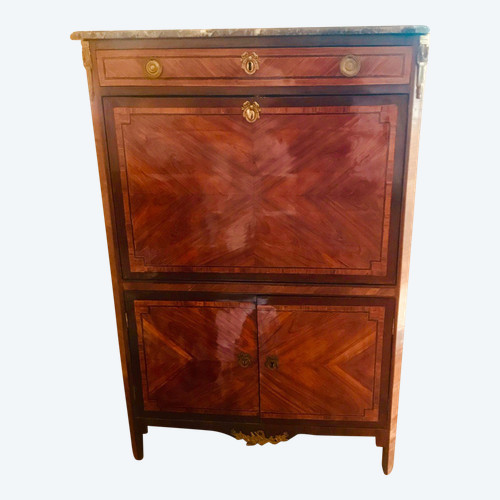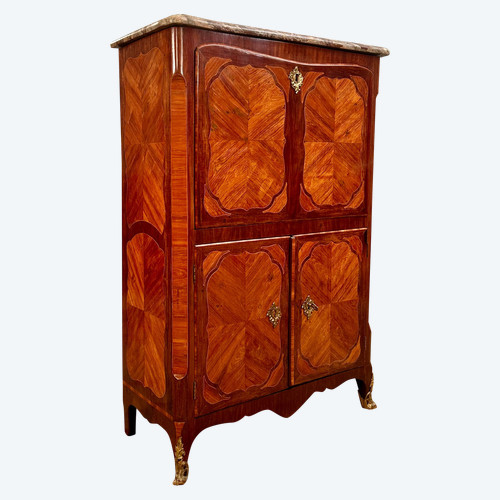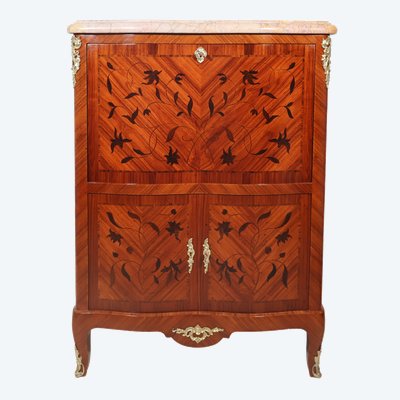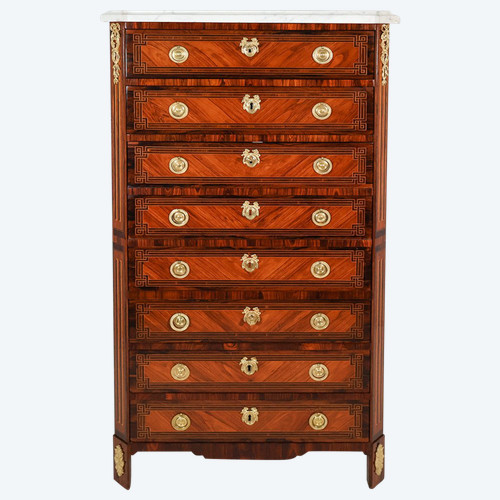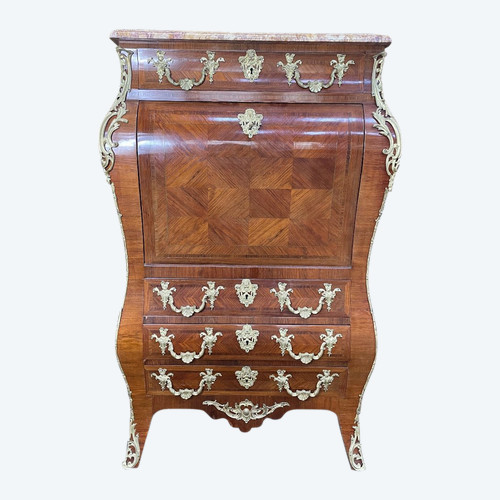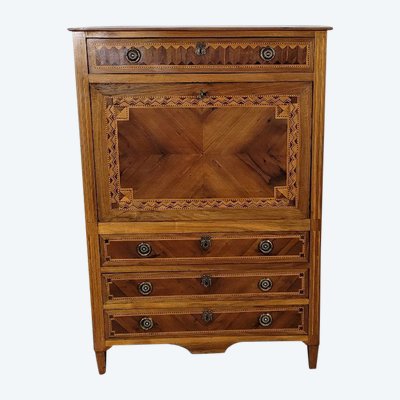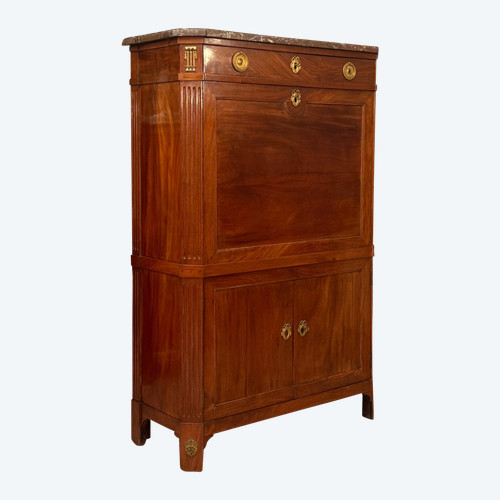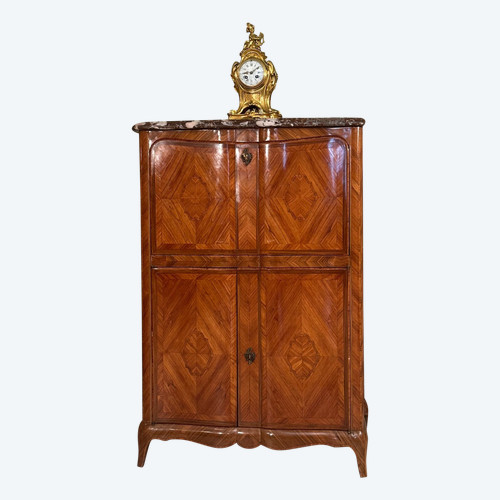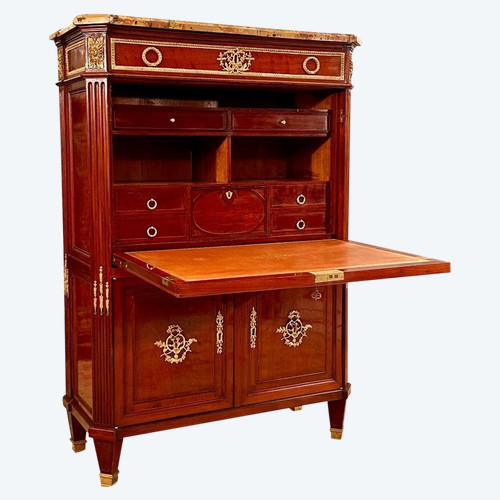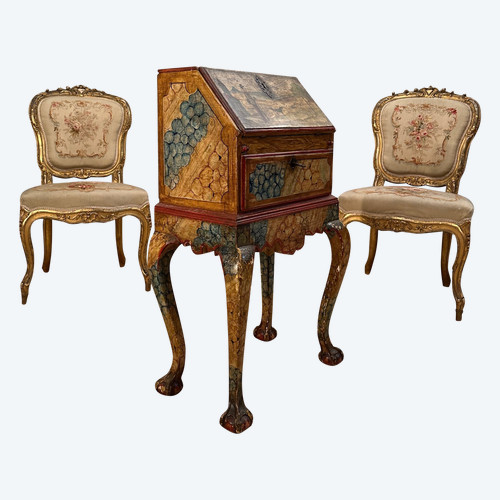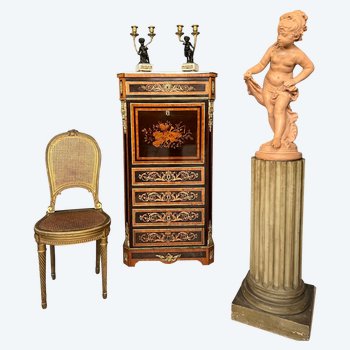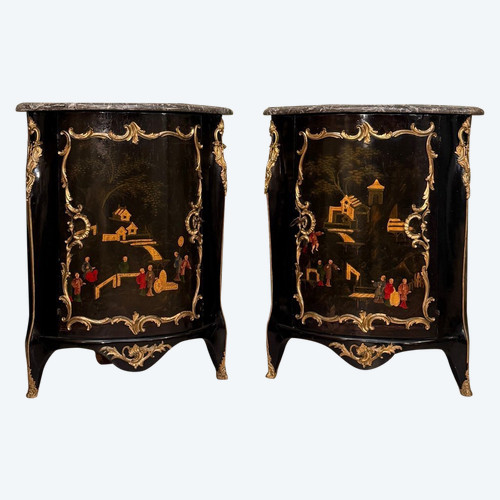This description has been translated and may not be completely accurate. Click here to see the original
Pierre Garnier, Secretary of the Louis XV Period Satin Marquetry
Around 1760
Superb Louis XV Period Secretary with Abattants. In Satin, Wood
Rose and Violet Wood.
It opens with a drawer, 2 leaves and a flap discovering 6 tiers
and One Compartment.
Its Rounded Amounts Resting On Arched Feet.
Topped with a Red Flanders Marble Top.
Supplied with the key, The Locks Work.
Stamped by Pierre Garnier (circa 1726-1800), on the Left Rear Upright.
PIERRE GARNIER
Pierre Garnier (circa 1726-1800) - cabinetmaker - master's degree obtained on December 31, 1742: Pierre Garnier is one of the greatest cabinetmakers of his century. His specificity is based on his long life during which he produced a wide range of books, illustrating successive styles of the 18th century.
Of Parisian origin, son of master cabinetmaker François Garnier and Françoise Courant, Pierre Garnier was admitted to the master's degree in 1742. Member of the jurande of cabinetmakers, his father was then elected to serve as a juror - a position he occupies until 1744. In the desire not to follow his father, Garnier abandons the Faubourg Saint-Antoine for the rue Neuve-des-Petits-Champs, near the place Vendôme. In 1754, he married Madeleine-Antoinette Oger, daughter of a merchant-maker of gold and silver stripes. Renowned cabinetmaker, his clientele undoubtedly consisted of merchants like Léonard Boudin but above all of the great rich of the kingdom to whom he delivered numerous orders. Among them, Louis Georges Erasme, Marshal of France, the Duchess of Mazarin or the Marquis de Marigny, brother of Madame de Pompadour, present themselves as the most regular. Precious document, the correspondence preserved between the two men, which results from the many orders carried out for him, gives us the opportunity to better understand the character traits of the cabinetmaker, summarized according to the formula established to define the new jurors of the jurande. carpenters with "recognized integrity, conduct and ability".
If Garnier is less well known than his colleagues Oeben or Riesener, he is nonetheless one of the greatest promoters as well as one of the most original masters of the "Greek" style which is inserted today. more broadly in the style of Louis XVI. The first years of his career were marked by the rococo style then in fashion. He already produces high-quality works such as chests of drawers in diamond marquetry, rosewood and amaranth, but also refined secretaries and corners inlaid with precious wood or adorned with varnish in the taste of China. The manner of Garnier displays a predominance of geometric marquetry, diamonds, braces or veneers in variously arranged sheets. These veneers are sometimes compartmentalized by very sinuous and very intertwined frames. He also made some furniture in the transition style; but it was all the same with the arrival of neoclassicism that Garnier achieved the largest and most significant part of his career, a period during which he affirmed his style and produced very distinctive works. These pieces of furniture characterize the "Greek" style, a style with architectural forms and decorations provided partly in the Louis XIV style. Alongside these pieces of furniture, Garnier also produces low bookcases, secretaries with veneers or lacquers framed in bronze, as well as a series of flat desks.
As can be seen from a text published in Les Petites Affiches from 1800 announcing the sale of his factory after his death, the cabinetmaker's activity continued after the Revolution and until the end of his life. (Furniture and Cabinetmakers from the 18th century)
The use of Satin Plated vertically is quite rare, In addition to Pierre Garnier, it is found
at J.F OEBEN and J.F LELEU.
Work of Louis XV Period, Around 1760.
Dimensions:
Height: 133 cm
Width: 65 cm
Depth: 35cm
In Very Good State of Conservation, to report a small corner of marble
formerly restored left rear.
For all information, contact us.
Ref: JO5X7V9JXV

